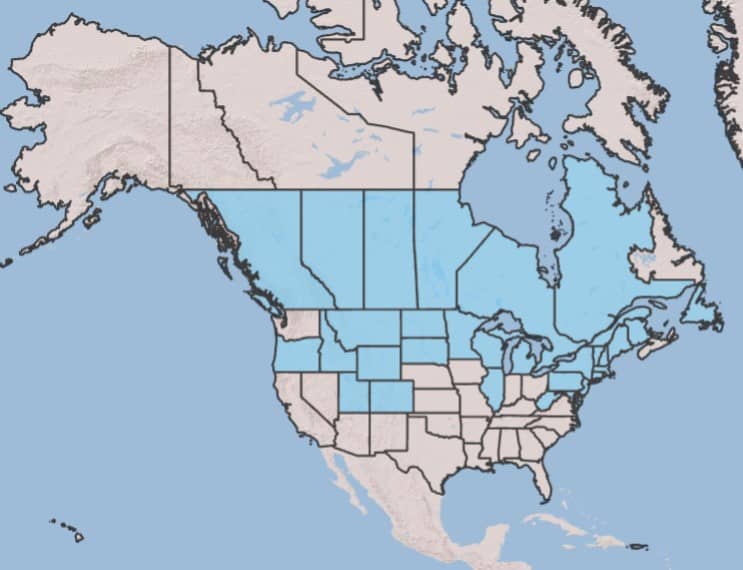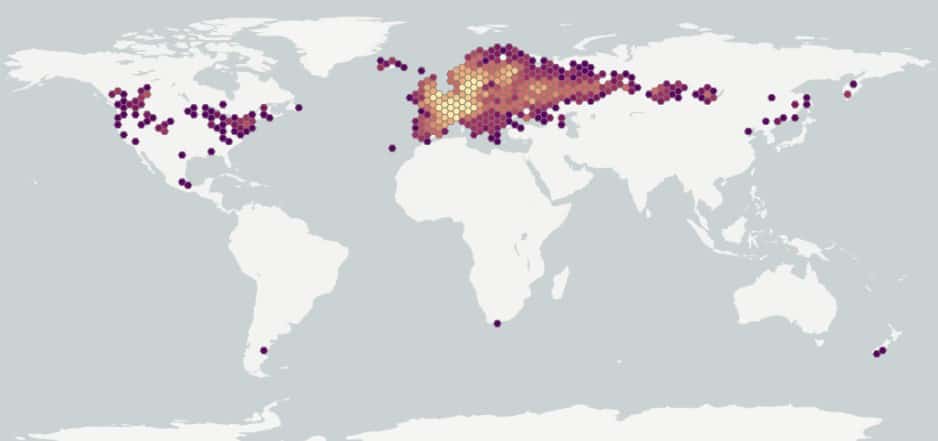Knautia arvensis
Explore More :
Explore plus :
Overview
Aperçu
Regulation :
Remarques Réglementation:
- Quarantine lists of countries e.g. China *may be updated without notice
Regulation Notes:
On quarantine lists of countries e.g. China*.
*Quarantine lists of countries may be updated without notice.
Distribution :
Répartition :
Field scabious is native to Eurasia and naturalized in the Russian Federation and North and South America (USDA-ARS 2017). It is widespread in the northern United States (USDA-NRCS 2017).
Habitat and Crop Association :
Habitat et Cultures Associées :
This species occurs in dry soils, pastures, old fields, roadsides and disturbed areas (Darbyshire 2003).
Economic Use, cultivation area, and Weed Association :
Utilisation économique, zone de culture et association de mauvaises herbes :
Duration of Life Cycle :
Durée du cycle vital:
Perennial
Dispersal Unit Type :
Type d’unité de dispersion :
Nutlet
General Information
RENSEIGNEMENTS GÉNÉRAUX
Field scabious has a deep taproot, is cultivated as a garden ornamental and known for attracting butterflies. It occurs as an occasional weed in most provinces. Also, it competes with forage and pasture land in western Canada (Darbyshire 2003; ISCBC 2014).
.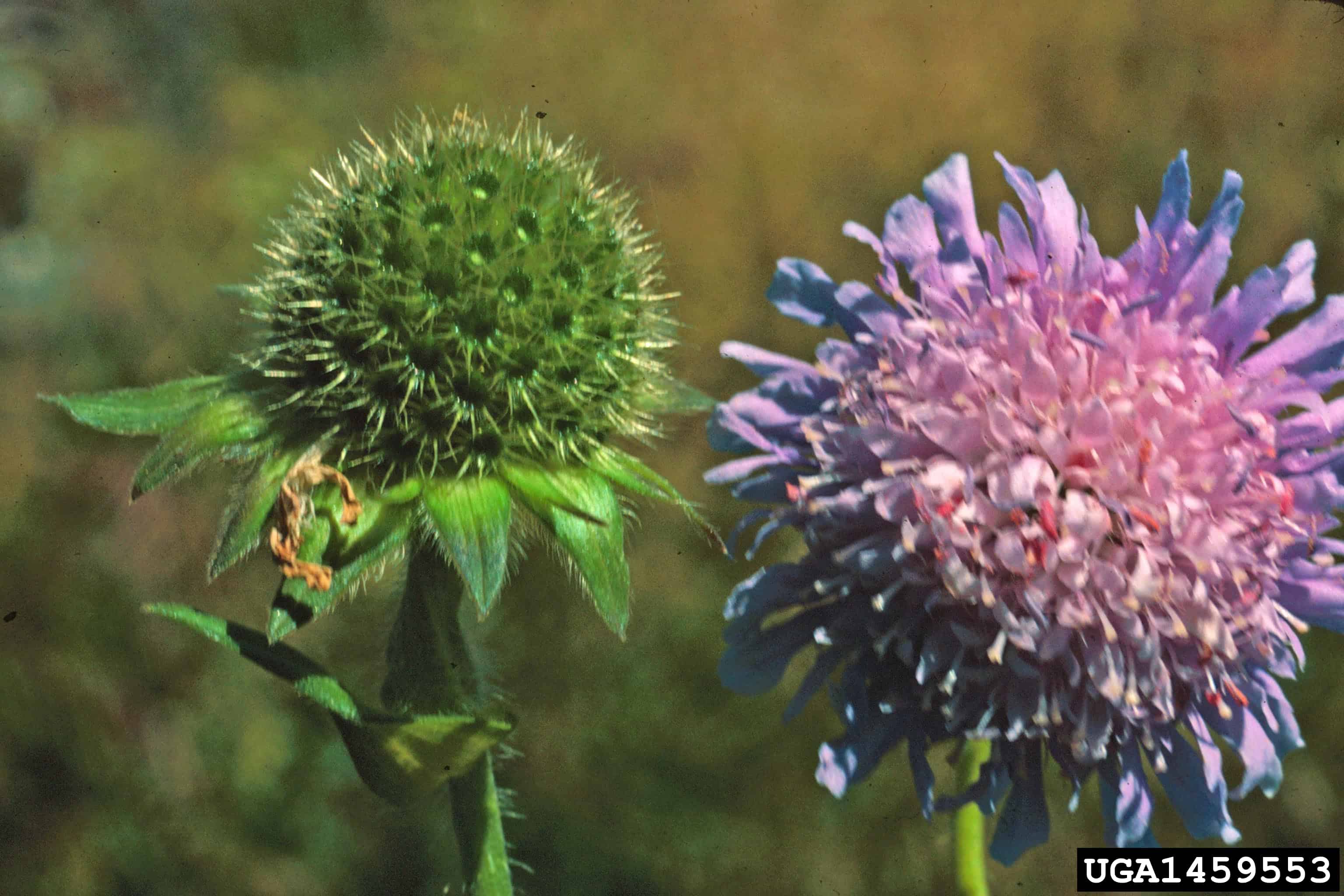
Knautia arvensis flowers (Steve Dewey, Utah State University, Bugwood.org)
Identification
Identification
-
Nutlet
Size
- Nutlet length: 2.7 – 5.7 mm (average: 4.5 mm) ; width: 1.5 –2.9 mm (average: 2.1 mm)
Shape
- Nutlet is oblong-shaped, compressed, with a central ridge on each flat face
Surface Texture
- Nutlet surface is covered with long hairs and may be densely resin-dotted
Colour
- Nutlet is light brown, some have a green wash
Other Features
- Nutlet has a light coloured knot of persistent tissue at one end
- An easily-removed, greenish ring of bristles may be found on the end opposite the tissue knot on immature nutlets
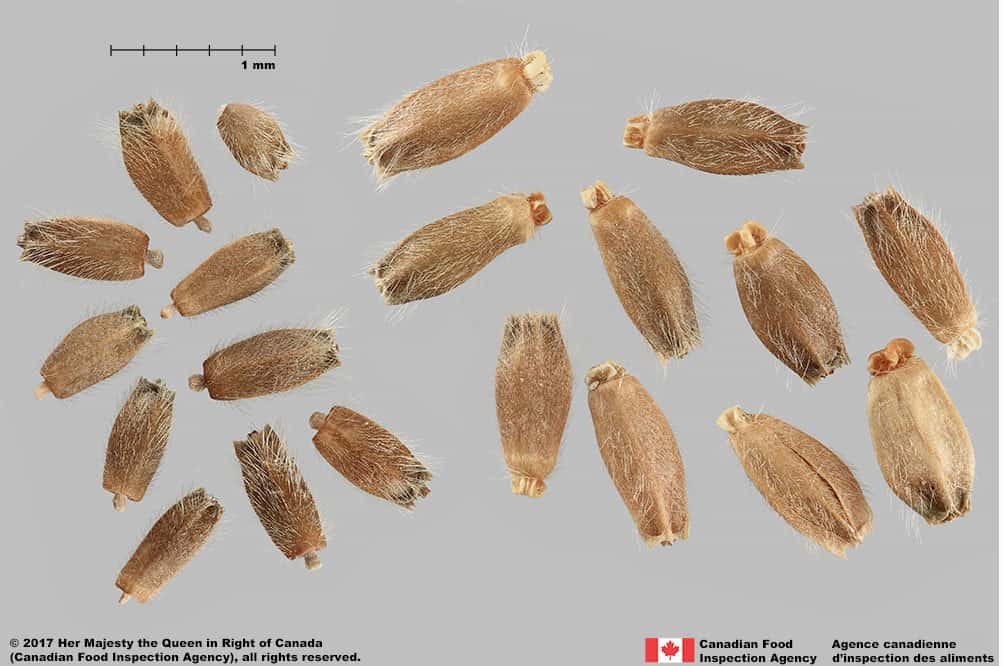
Field scabious (Knautia arvensis) nutlets

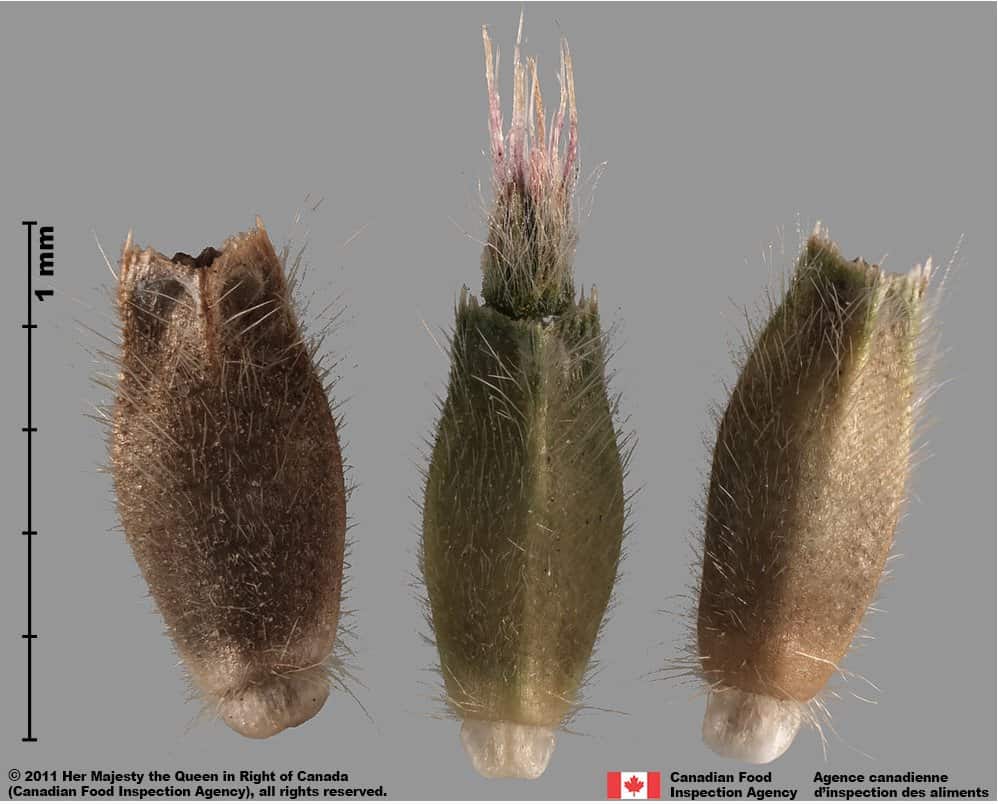
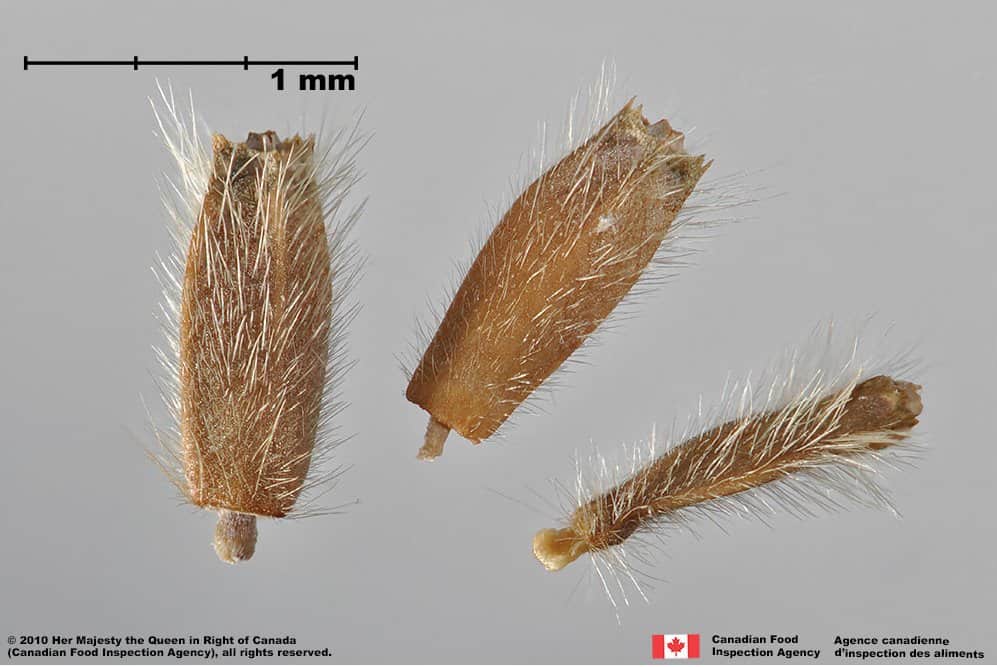
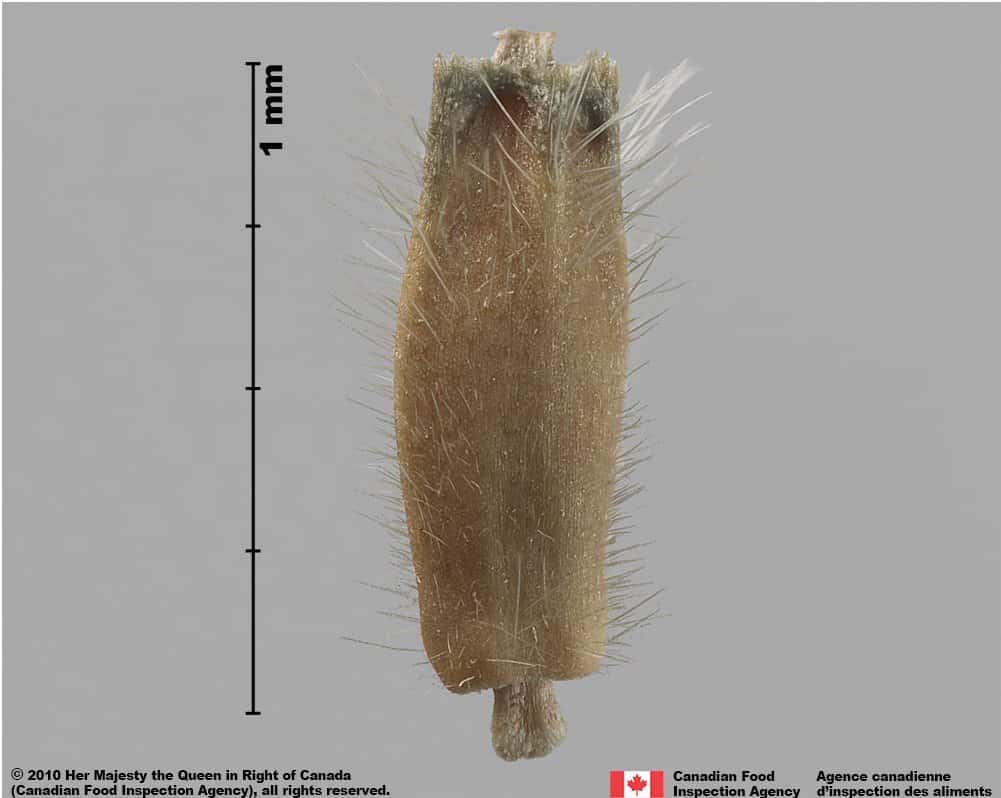
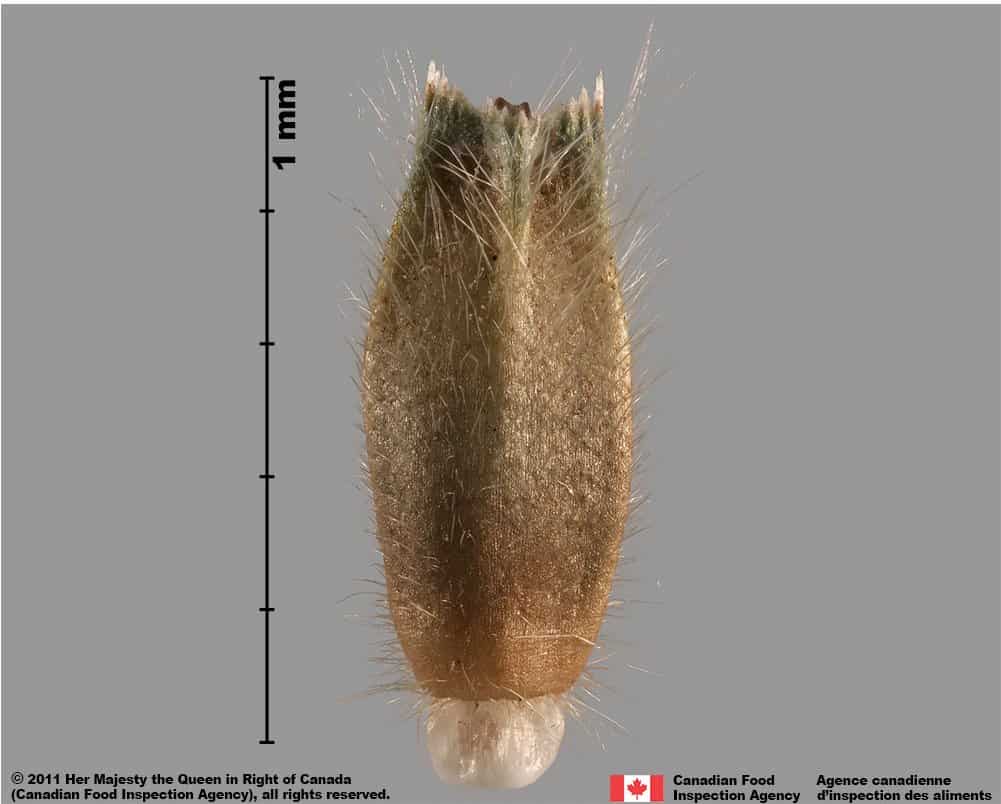
Identification Tips
CONSEILS POUR L’IDENTIFICATION
Additional Botany Information
AUTRES RENSEIGNEMENTS BOTANIQUES
Similar Species
ESPÈCES SEMBLABLES
Similar species are based on a study of seed morphology of various species, and those with similar dispersal units are identified. The study is limited by physical specimen and literature availability at the time of examination, and possibly impacted by the subjectivity of the authors based on their knowledge and experience. Providing similar species information for seed identification is to make users aware of similarities that could possibly result in misidentification.
Knautia dipsacifolia (wood scabious)
Knautia dipsacifolia nutlets are a similar oblong shape with truncate ends, hairy and resin-dotted surface texture, light brown colour and a knot of tissue at one end.
Knautia dipsacifolia nutlets may be slightly curved to one side. The nutlets of the two species are similar and difficult to distinguish. Specimen comparison is recommended for an accurate identification.
Click to select species
Cliquez pour sélectionner les espèces
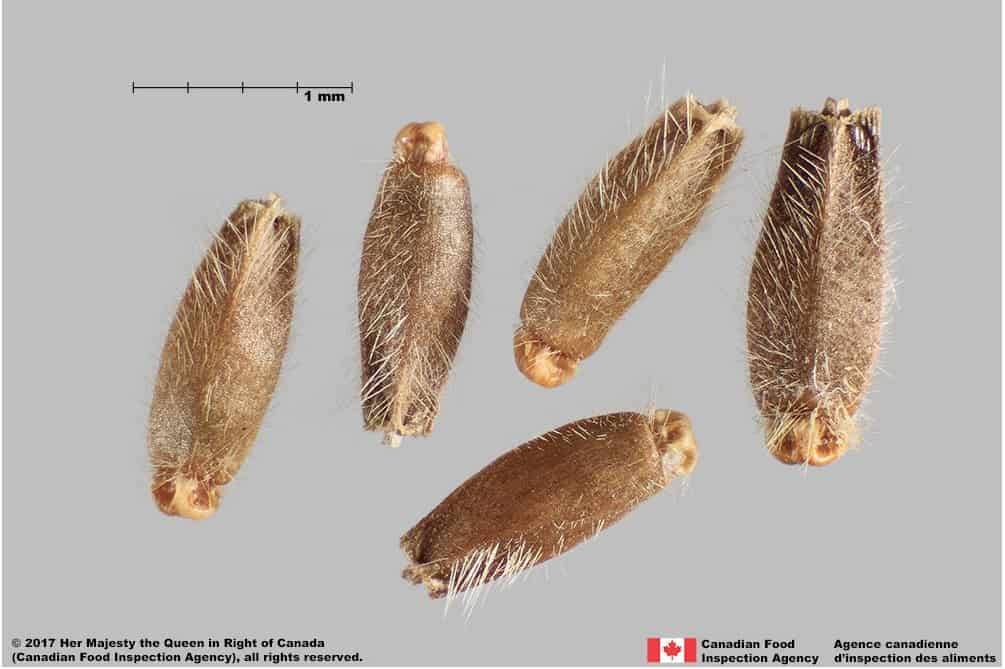
Knautia dipsacifolia
Comparison Window
Fenêtre de comparaison
MAIN SPECIES
ESPÈCES PRINCIPALES
Knautia arvensis

Knautia arvensis
Caprifoliaceae
Field scabious (Knautia arvensis) nutlets
MAIN SPECIES
ESPÈCES PRINCIPALES
Knautia arvensis

Knautia arvensis
Caprifoliaceae
Field scabious (Knautia arvensis) nutlets
MAIN SPECIES
ESPÈCES PRINCIPALES
Knautia arvensis

Knautia arvensis
Caprifoliaceae
Field scabious (Knautia arvensis) nutlets
MAIN SPECIES
ESPÈCES PRINCIPALES
Knautia arvensis

Knautia arvensis
Caprifoliaceae
Field scabious (Knautia arvensis) nutlet
MAIN SPECIES
ESPÈCES PRINCIPALES
Knautia arvensis

Knautia arvensis
Caprifoliaceae
Field scabious (Knautia arvensis) nutlet
SIMILAR SPECIES
ESPÈCES SEMBLABLES
Knautia dipsacifolia

Knautia dipsacifolia
Caprifoliaceae
Wood scabious (Knautia dipsacifolia) nutlets
SIMILAR SPECIES
ESPÈCES SEMBLABLES
Knautia dipsacifolia
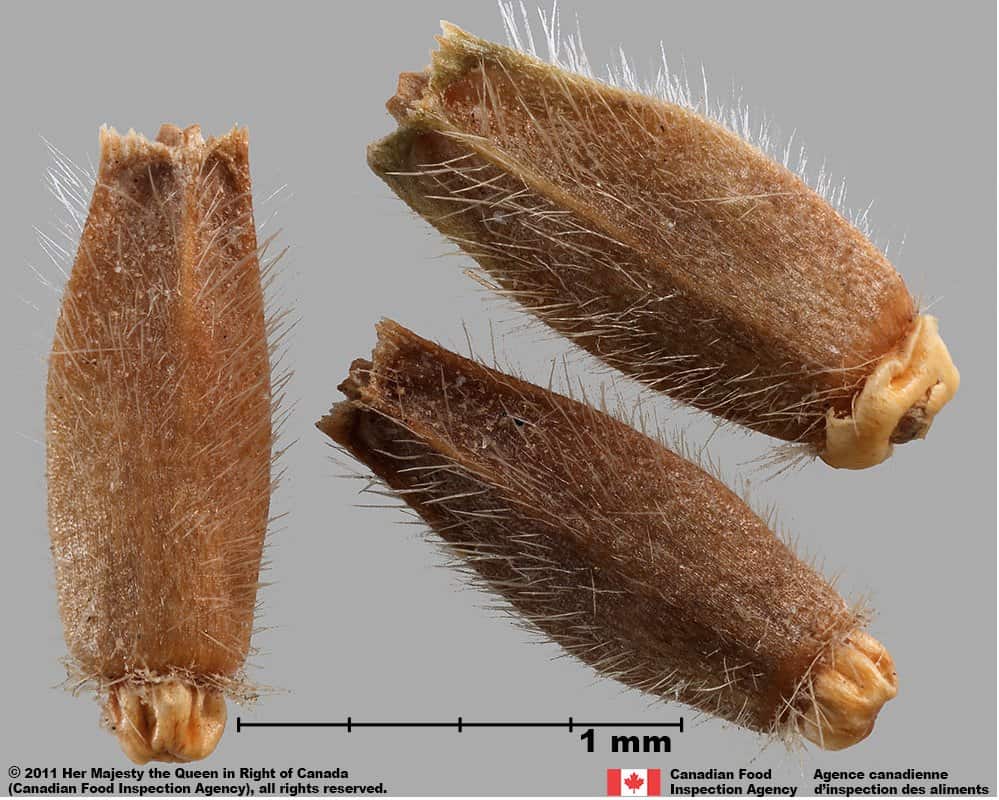
Knautia dipsacifolia
Caprifoliaceae
Wood scabious (Knautia dipsacifolia) nutlets
SIMILAR SPECIES
ESPÈCES SEMBLABLES
Knautia dipsacifolia
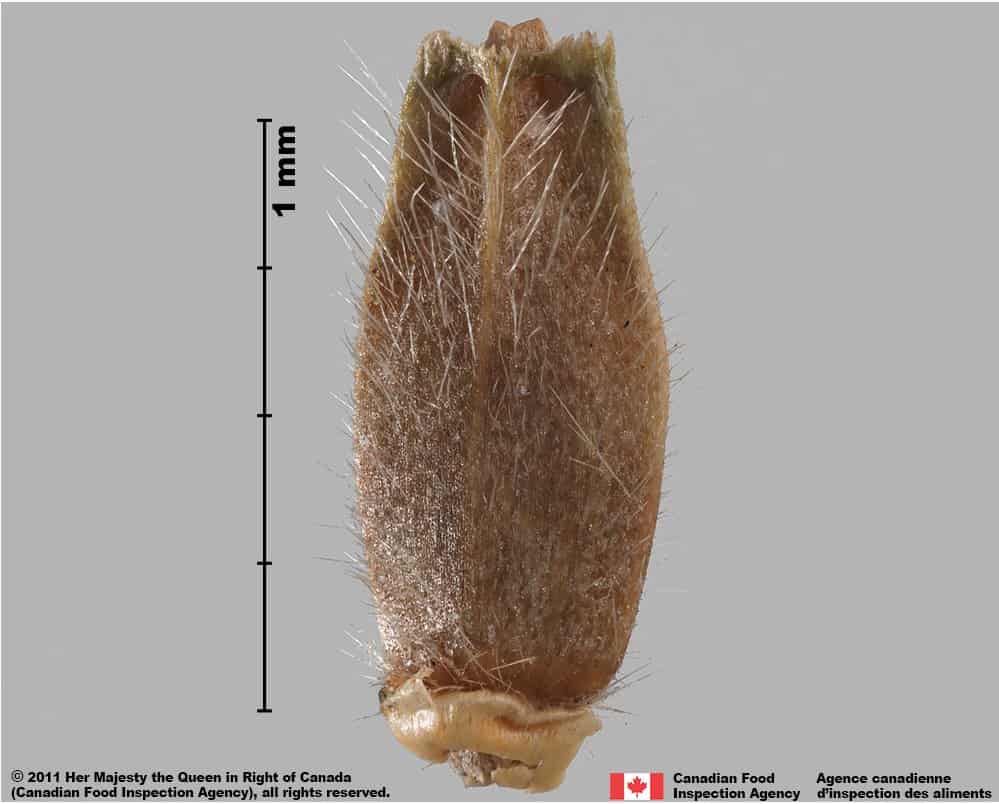
Knautia dipsacifolia
Caprifoliaceae
Wood scabious (Knautia dipsacifolia) nutlet
Need ID Help?
Besoin d’aide pour l’identification?
Reference(s)
Référence(s)
Darbyshire, S. J. 2003. Inventory of Canadian Agricultural Weeds. Agriculture and Agri-Food Canada, Research Branch. Ottawa, ON.
Global Biodiversity Information Facility (GBIF) Secretariat. 2022. https://doi.org/10.15468/39omei Accessed via https://www.gbif.org/species/2888808 Accessed December 29, 2022.
Invasive Species Council of BC (ISCBC) 2014. Field scabious. Invasive plants [fact sheets]. http://bcinvasives.ca/invasive-species/identify/invasive-plants/field-scabious Accessed July 25, 2017.
U.S. Department of Agriculture-Agricultural Research Services (USDA-ARS). 2017. Germplasm Resources Information Network (GRIN), https://npgsweb.ars-grin.gov/gringlobal/taxon/taxonomysearch Accessed April 25, 2017.
U.S. Department of Agriculture-Natural Resources Conservation Service (USDA-NRCS). 2017. The PLANTS Database. National Plant Data Team, Greensboro, NC USA. https://plants.usda.gov/home Accessed April 25, 2017.
U.S. Department of Agriculture-Natural Resources Conservation Service (USDA-NRCS). 2022. The PLANTS Database. National Plant Data Team, Greensboro, NC USA. http://plants.usda.gov Accessed December 29, 2022.



